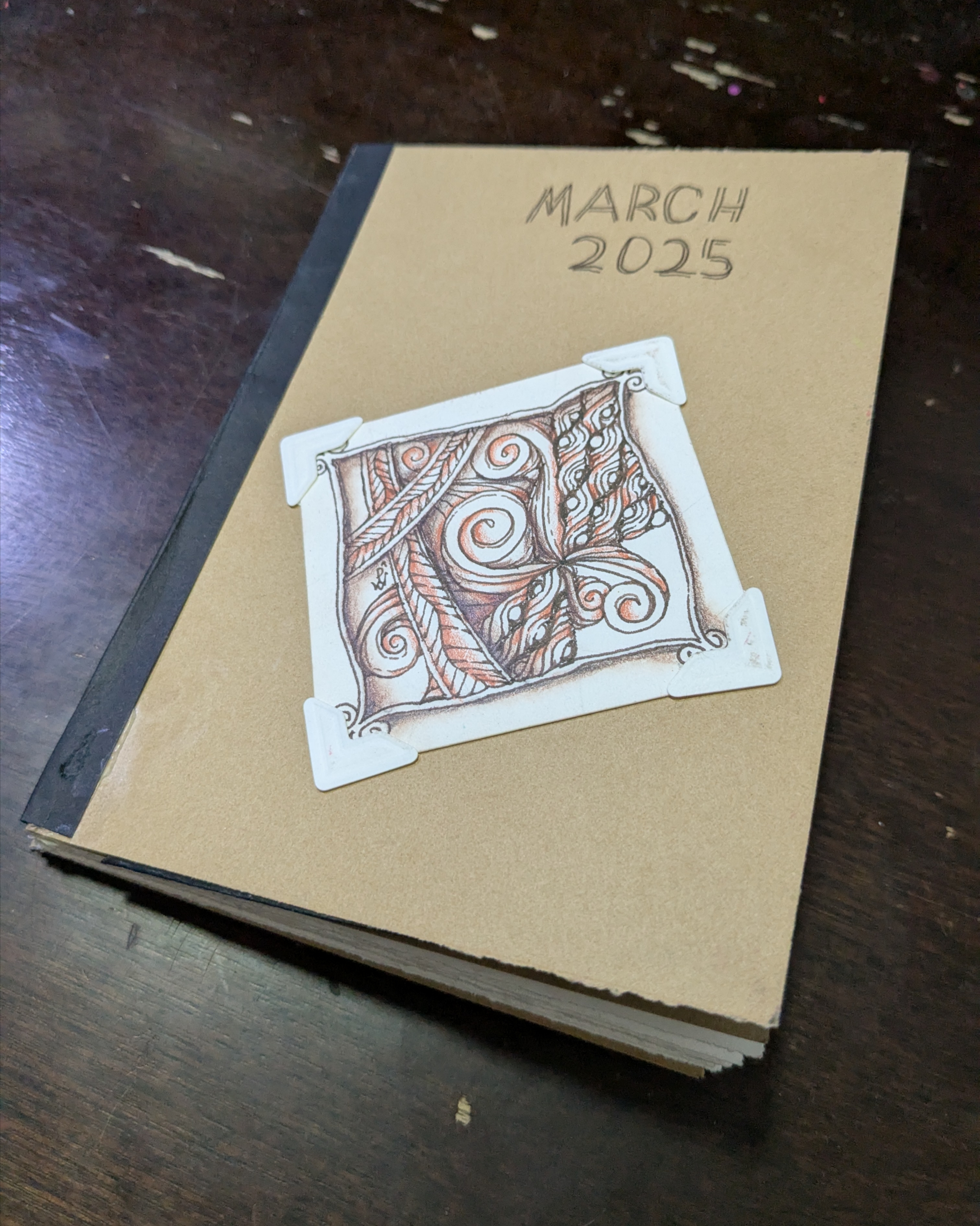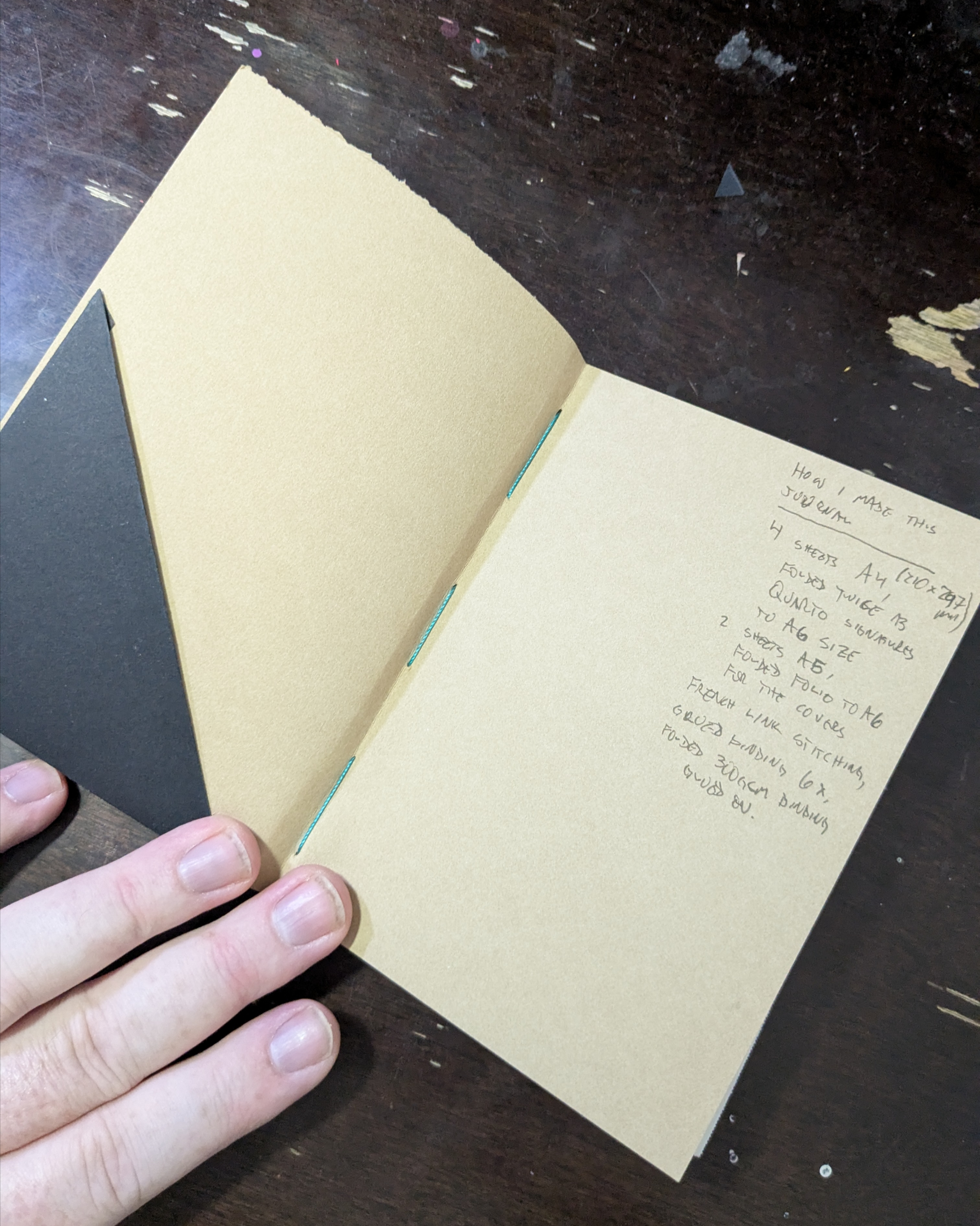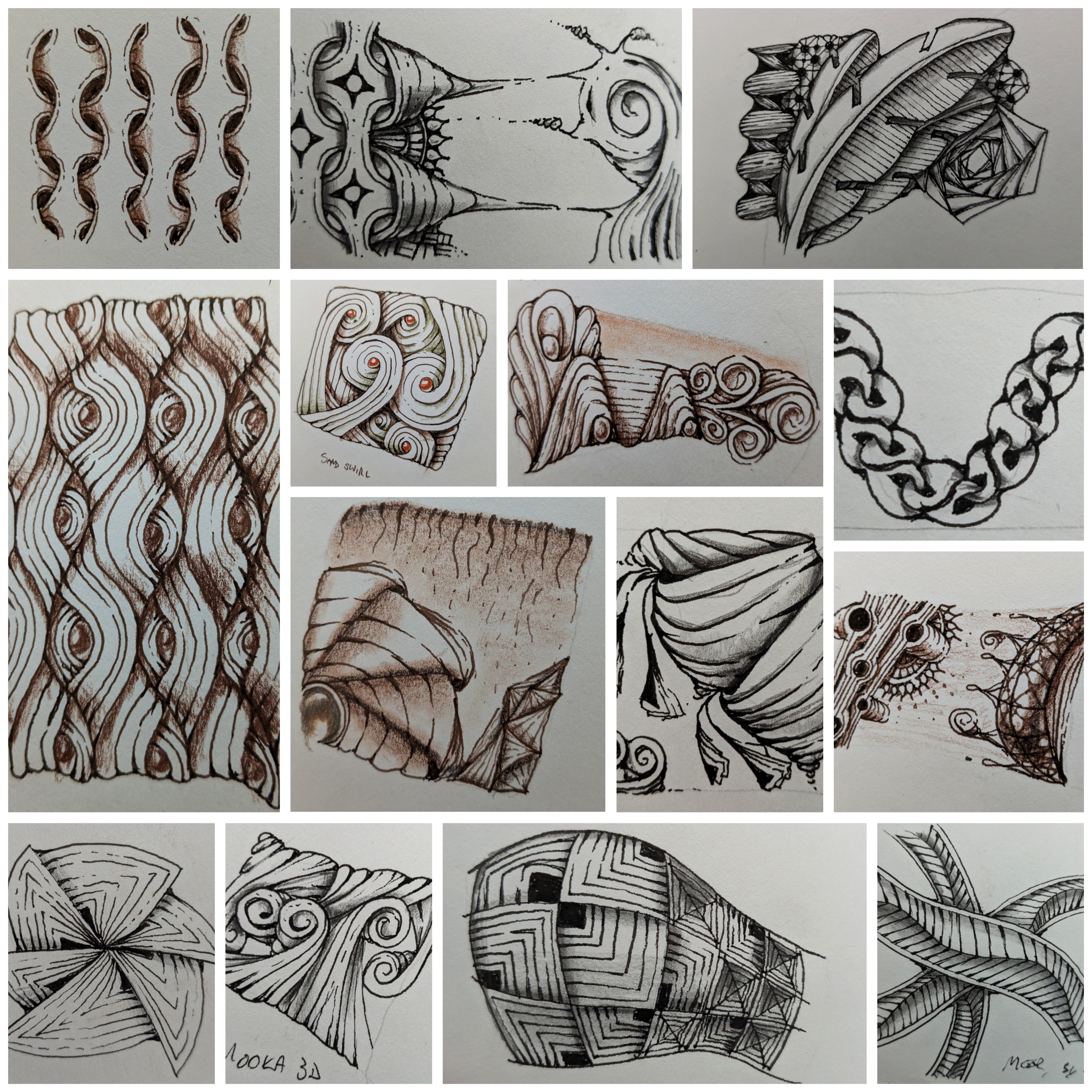
An Experiment in Journaling
I've been struggling to make time to either journal or draw.
The last I journaled regularly was in the winter of 2016/2017. Before that, it had been a number of years as well. I type so much faster than I write by hand, and my handwriting is atrocious. But when I type my journal entries... it's too easy to get distracted and do something else, or to edit as I go, instead of just letting the words spill out.
As for drawing, it's not that I'm not drawing, it's that I'm not drawing regularly. It's felt like an effort, which is unfortunate, as drawing was what I was doing to relax.
So I made a choice.
The journal
I started ruminating on what it would take to get me both journaling and drawing regularly. I was inspired by a couple different things I've seen over the years:
- Dr. Amy Marschall blogged about a "One Word a Day" journal as a way to start building a journaling habit.
- Braughler Books publishes a "Tangle-A-Day Calendar" each year. These feature art from a different artist each year, and a small (around 2x2 inches, IIRC) space for each day in which to tangle. I bought one in 2020, but didn't really follow through on it.
With these as starting points, I started considering what has helped me be successful, and what has prevented me from success.
-
Having a space/page marked for each day is challenging for me. When I miss a day, it feels like a failure, and I either feel compelled to fill it, or just give up. This wreaks havoc on me when I'm on vacation or sick, as coming back to it feels like an insurmountable challenge. As such, I decided whatever solution I chose had to be open-ended, without an explicit expectation of a daily fulfilment.
-
I want to encourage both journaling and tangling, but if I do them separately, that's two things I have to track, and committing to two things at once feels overwhelming. I need a solution that will allow me to mix both.
-
I created a handbound journal in December as part of Sketchbook Revival 2024. It's 5.5 x 8.5 inches, and I absolutely love it. But those pages are way too big; it takes a fair amount of writing and drawing to fill a page. I need a solution where the pages are not so big as to be challenging to fill. I can always fill multiple pages if I need more space, but the goal is to feel accomplishment at the end of each session.
-
I realized that part of my reluctance to draw is that tiles take time. When I started Zentangle, I was doing at least a tile a day. However, when I started in Eni Oken's Art Club in 2020, I actually started seeing my output go down. This was largely due to the fact that I was picking up new techniques, but also due to the fact that I was approaching each tile as a work of art. Tiles started taking 3-5 hours to complete, which generally meant multiple drawing sessions. In other words, they became work. I need a solution that frees me from the idea that I need a completed work. (Ironically, the Zentangle process is meant to be something you can do in one session.)
What I decided on in the end is the following:
- An A6-sized journal,
- Made from 4 quarto signatures, which gives me 32 pages, or roughly one a day.
- With a stiff cover (I used 300gsm paper for the cover)
I made the journal myself, using French Link stitch binding, and glued the binding when done with acid-free archival glue. I also affixed a pocket in the inner cover:

Observations after two weeks
I started the journal on March 2, and have consistenly used it every day since.
This size is fantastic; it fits in my art tool roll-up, which mean I can carry everything in one hand. It takes a matter of 5-10 minutes to both journal some quick thoughts and observations, as well as to do a quick sketch.
I'm already finding that I'm having some recurring insights that, while they've been spinning in my head for some time, having the concrete words written on paper are pushing me to action or change.
My drawing has changed as well. I'm holding my pen differently, giving me more control. I'm slowing down as I draw, also giving me more control. And drawing each day has led to me playing more, particularly as I'm not constrained by a tile. I've been delighted with the results.

Some outcomes
One of the topics that was arising in my journaling was that I'm unhappy with how much time I spend doing casual games (hashi, sudoku) and scrolling social media. I'd been thinking the same for some time, but, as I noted earlier, the physical act of writing them down was transformative. As a result, I put in controls in my mobile platforms and web browsers to limit access to these apps and websites, limiting to 15 minutes per day.
This has been a huge change.
I discovered how often my default activity was to take out my phone and do these things. I'd take it out while making tea or coffee. I'd scroll through socials when my spouse would head to the bathroom while we were watching television.
And all of it was affecting my mood and mental health.
When I put the limits in place, I found after just a few days that I was less anxious and more relaxed. Reducing my exposure to "news" and social media outrage has led to more mindful news consumption. I still learn what I need to, including what actions I need to take around local and state initiatives, but it's not constantly in my face.
I also re-discovered the joys of boredom. I find myself just sitting, sometimes petting the dogs, sometimes listening to music, sometimes just enjoying the sunlight and birdsong. By not reaching for casual games, not reaching for social media, I can be in the moment. If the boredom bothers me... I find something to do. I draw, I bake or cook, I tackle my website todo list, I exercise, I call up a friend, I explore the city.
These have been such positive outcomes that I've already created my journal for April.